
Convolvulaceae, commonly called the bindweeds or morning glories, is a family of about 60 genera and more than 1,650 species. These species are primarily herbaceous vines, but also include trees, shrubs and herbs. The tubers of several species are edible, the best known of which is the sweet potato.
In ancient Greece, the Buphonia denoted a sacrificial ceremony performed at Athens as part of the Dipolieia, a religious festival held on the 14th of the midsummer month Skirophorion—in June or July—at the Acropolis. In the Buphonia a working ox was sacrificed to Zeus Polieus, Zeus protector of the city, in accordance with a very ancient custom. A group of oxen was driven forward to the altar at the highest point of the Acropolis. On the altar a sacrifice of grain had been spread by members of the family of the Kentriadae, on whom this duty devolved hereditarily. When one of the oxen began to eat, thus selecting itself for sacrifice, one of the family of the Thaulonidae advanced with an axe, slayed the ox, then immediately threw aside the axe and fled the scene of his guilt-laden crime.

Myrmecophagy is a feeding behavior defined by the consumption of termites or ants, particularly as pertaining to those animal species whose diets are largely or exclusively composed of said insect types. Literally, myrmecophagy means "ant-eating" rather than "termite eating". The two habits often overlap, as both of these eusocial insect types often live in large, densely populated nests requiring similar adaptations in the animal species that exploit them.
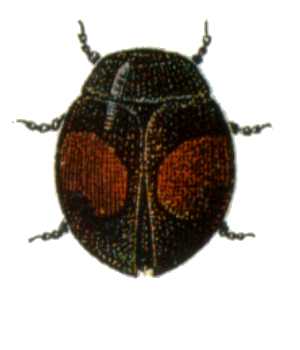
Diomus notescens, common name the minute two-spotted ladybird is a ladybird species endemic to the east and south of Australia.
Empyelocera xanthaspis is a species of ulidiid or picture-winged fly in the genus Empyelocera of the family Tephritidae.
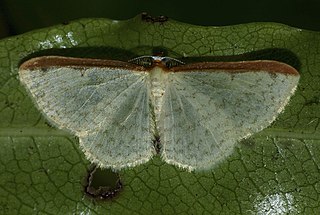
Epiphryne is a genus of moths in the family Geometridae erected by Edward Meyrick in 1883. All the species within this genus are endemic to New Zealand.
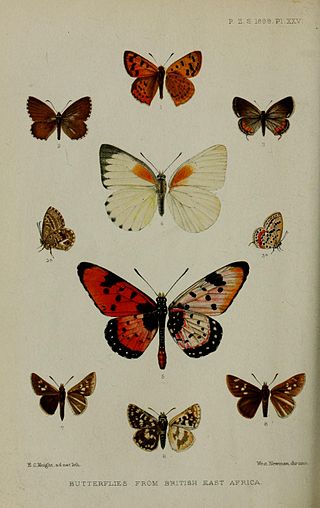
Spialia diomus, the common sandman or Diomus grizzled skipper, is a butterfly of the family Hesperiidae. It is found in tropical Africa and south-western Arabia.
Timia xanthaspis is a species of ulidiid or picture-winged fly in the genus Timia of the family Ulidiidae.
Diomus pumilio is a species of ladybird. Its common name is Longblack Ladybird. It is found in North America, Oceania and Australia.
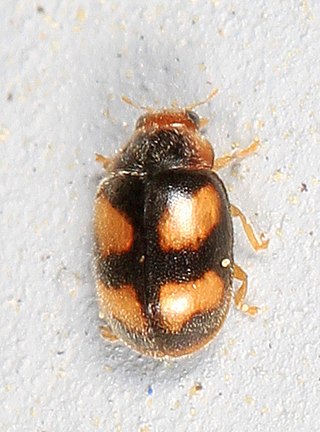
Diomus is a genus of lady beetles in the family Coccinellidae. There are at least 20 described species in Diomus.
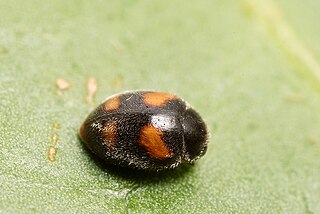
Scymninae is a subfamily of beetles in the family Coccinellidae. There are at least 170 described species in Scymninae.
Diomus pseudotaedatus is a species of lady beetle in the family Coccinellidae. It is found in North America.
Diomus bigemmeus is a species of lady beetle in the family Coccinellidae. It is found in North America.
Diomus debilis is a species of lady beetle in the family Coccinellidae. It is found in North America and Oceania.

Diomus amabilis, the amiable lady, is a species of lady beetle in the family Coccinellidae. It is found in North America.

Diomus roseicollis is a species of lady beetle in the family Coccinellidae. It is found in North America.
Diomus texanus is a species of lady beetle in the family Coccinellidae. It is found in North America.
Diomus liebecki, or Liebeck's lady, is a species of lady beetle in the family Coccinellidae. It is found in North America.

Diomus terminatus is a species of lady beetle in the family Coccinellidae. It is found in throughout eastern North America. It is brown and oval-shaped, with a reddish tinge at the back portion of its elytra, and about 1.5 to 2 mm. It is covered in gold-colored setae, giving it a slightly hairy appearance. Its prey likely includes aphids, scale, and mealybugs.

Epiphryne xanthaspis, also known as the Aristotelia Looper, is a moth in the family Geometridae. This species was first described by Edward Meyrick in 1883. It is endemic to New Zealand and can be found from the central North Island southward to the bottom of the South Island. The preferred habitat of this species is sub-alpine native forest. The larval hosts of E. xanthaspis are plants in the genus Aristotelia and include Aristotelia fruticosa. Adults are on the wing from December until March.










